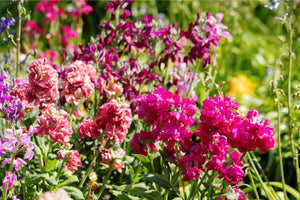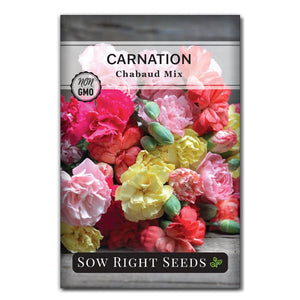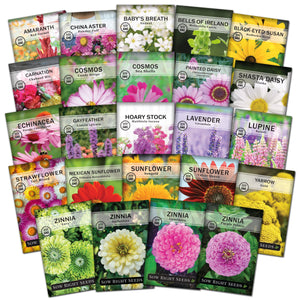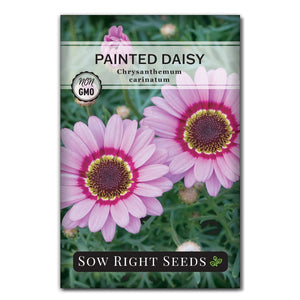What Is Deadheading? 7 Things You Should Know for Nonstop Blooms
Flower farming
What is Deadheading Flowers?
If you’ve ever heard a gardener talking about deadheading their flowers, it’s not really all that creepy or dramatic. It has nothing to do with playing music to your plants, not even groovy songs from the 1960s, no matter what your search engine results might turn up. You might already be doing it on your own, even if you don’t know what it is.
According to the Penn State Extension, “Deadheading is a process of pruning by which old growth and seed heads are removed from the plant to promote new growth and re-flowering.” That’s right, it’s the simple task of snipping or pinching the ugly parts off the tops of your flowers.

Should I Deadhead My Flowers?
Now that you’ve got a word for the technique you’ve been using all along, let’s talk about why you’d want to deadhead.
Keep Your Garden Tidy. Gardeners often deadhead to keep plants looking their best. Flowers that have withered and gone to seed aren’t as attractive. Removing them when they lose their beauty makes sense.
Refocus Plant Energy on Flower Making. Perennials that bloom throughout the year can be encouraged to make more flowers with deadheading. If the seedhead is left, the plant will focus its energy on the seeds instead of flowers, leaves, and roots. Removing blooms as they start to fade throughout the growing season allows your plant to produce more flowers and healthy foliage.

Flowers that Thrive with Deadheading
Flowers that produce more blooms after they have been cut are referred to as Cut-and-Come-Again. These flowers will reward you with even more blooms if they are regularly deadheaded.

How to Deadhead Flowers for More Blooms
Deadheading is more than just removing old flowers—it’s a technique that encourages plants to keep producing vibrant blooms throughout the season. Follow these expert tips to get the best results:
1. Cut Above a Leaf Node or Bud
A general rule of thumb is to deadhead your flowers right above the first set of healthy leaves, making sure to get the whole flower head. The place where the plant has been cut is where it will send out new growth.
2. Deadhead Regularly
For continuous blooms, check your plants every few days and remove faded flowers as soon as they appear. Fast-blooming annuals like petunias and zinnias especially benefit from frequent deadheading.
3. Use the Right Tools
For soft-stemmed flowers like petunias and marigolds, you can use your fingers to pinch thme off. Tougher stemmed plants will neeed clean, sharp flower scissors.
4. Remove the Entire Spent Flower
Don’t just pull off petals—be sure to remove the entire flower head, including the seed pod, to prevent plants from putting energy into seed production instead of more blooms.
5. Water and Feed After Deadheading
Give plants a light feeding with a balanced liquid fertilizer and ensure they have adequate moisture to encourage healthy regrowth.
6. Leave Some Spent Flowers for Pollinators or Reseeding
If you want to attract birds or let flowers self-seed for the next growing season, leave a few spent blooms intact on plants like coneflowers, sunflowers, and poppies.
7. Deadhead at the Right Time
Avoid deadheading during the heat of the day. The best time is in the morning or evening when plants are less stressed and can recover more easily.

What Flowers Don’t Need Deadheading?
Not all plants need to be deadheaded. Flowers that naturally drop their dead blooms are called self-cleaning. Vincas and impatiens fall into this category.
Other flowers don't drop their flowers, but removing them won't result in more blooms.
Some examples of flowers that are just fine without extra effort are lantana, begonia, vinca, and impatiens. Flowers like peonies, which only bloom once a season, are also fine without deadheading.
You may also choose not to deadhead flowers so that they can go to seed. If you want seeds to fully develop, or if you’re hoping your flowers reseed themselves, allowing the seeds to remain or spread naturally might be a good choice.
You might choose to deadhead some plants throughout the season up until fall. When autumn comes around, leaving the plants to their own devices will allow the garden to reseed itself. Look to see where your flowers turn up the following spring. Plants can spread to the most unlikely places, so be ready for some surprises!
FAQs
Is deadheading necessary?
Deadheading isn't a requirement for growing flowers. However, it does have advantages, such as encouraging more blooms and keeping your garden tidy.
What's the difference between deadheading and pruning?
Deadheading removes just the spent flowers, while pruning involves cutting back entire stems or branches to shape a plant, improve health, or control size.
What tools do I need for deadheading?
With soft-stemmed flowers, you only need your fingers to pinch off spent flowers. For hard-stemmed flowers, you'll want a pair of garden scissors.
How often should I deadhead my flowers?
The frequency depends on the plant, but a general rule is to deadhead as soon as blooms fade. Some fast-blooming flowers may need deadheading every few days, while others only require it once a week.
Deadheading is one of the simplest ways to keep your garden bursting with blooms all season long. By regularly removing spent flowers, you encourage plants to produce more blossoms instead of going to seed. With proper timing, clean cuts, and a little post-deadheading care, your flowers will reward you with continuous color and healthy growth.
Ready to refresh your garden? Grab your pruners and get started! Looking to grow even more beautiful blooms? Browse our selection of heirloom, non-GMO flower seeds at Sow Right Seeds and plant something beautiful today!
Written by Teresa Chandler









Leave a comment